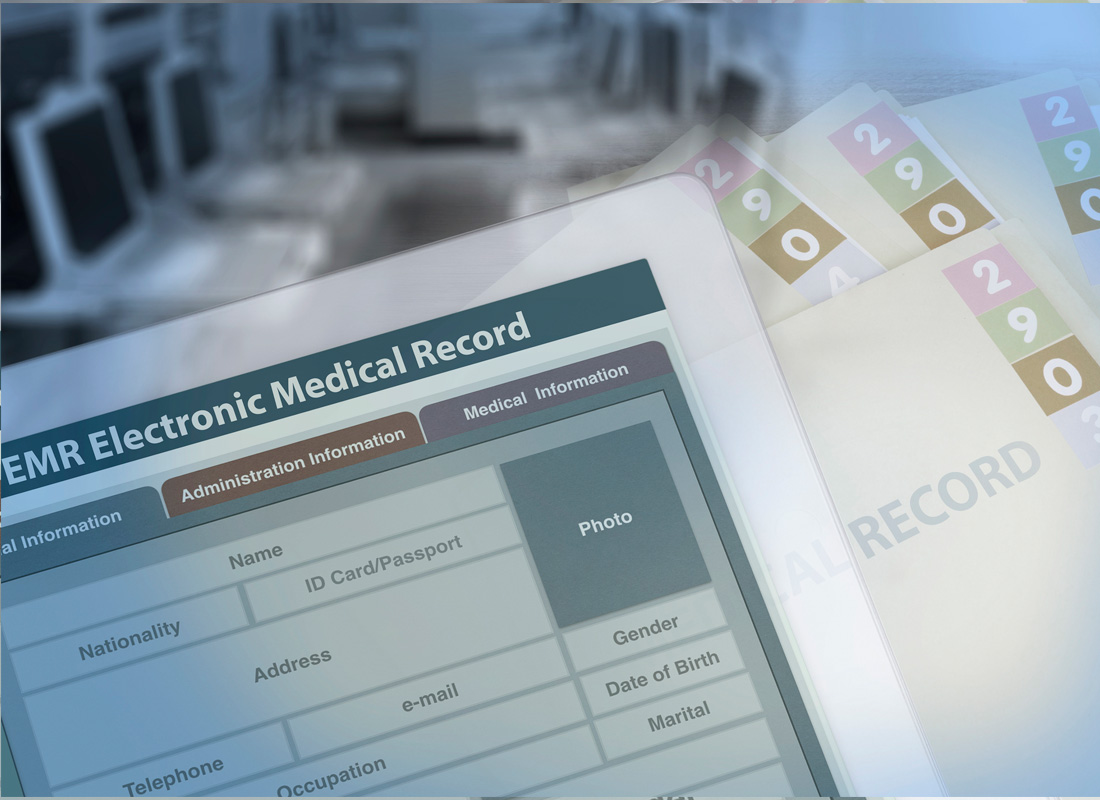AI in Health Care: Balancing Benefits and Barriers
AI can help alleviate the burden on clinical labs—but only with sufficient investment, enthusiasm, and understanding

The rapid expansion of artificial intelligence (AI) into health care has not gone unnoticed—especially in the clinical laboratory, where this technology can alleviate staffing burdens, increase workflow efficiency, and support clinical decision-making.1 But as AI’s presence in the laboratory grows, so do laboratory medicine professionals’ questions and concerns.
What can this technology bring to the clinical lab—and what barriers need to be overcome before its promise can be fulfilled?
AI throughout the healthcare funnel
“I think of health care as a funnel,” says Thomas Jankowski, a healthcare technology expert and CEO of Medimap, a Canadian health-tech company using AI to strengthen the practitioner-patient relationship. “At the top of the funnel, you have discoverability, then engagement, the pre-appointment experience, the appointment, and post-appointment. At each of these levels, several things have happened that are accelerating AI quite a bit.”
Jankowski highlights technologies such as online symptom checkers or wearable devices that can provide data for triage, rule in or out specific conditions, or even improve test utilization management by helping clinicians choose which lab tests to order.2 Reducing unnecessary testing means sparing patients’ time, trouble, and pain—and it alleviates the burden on already overworked laboratories.
But Jankowski’s vision for AI doesn’t stop at the doctor’s office. “The automation layer is where it’s most exciting,” he says. Many laboratorians still remember the days when labs and clinics connected mainly by fax.
Today, automated systems can support integration between almost any combination of laboratory information management systems, electronic health records, and other software. They can even convert natural language conversations and notes into diagnostic and billing codes within the software. And that’s just the beginning; Jankowski is confident that issues from turnaround times to workforce shortages can be addressed with AI support for better, faster automation.
However, the technology’s potential is often hampered by a resistance to change—especially in Canada: “We have a [healthcare] ecosystem full of black boxes that people don’t feel comfortable opening,” he explains. “If you are interested in this integration approach and see the potential in making things easier to connect, speak to your vendors, government, and associations—because it’s not happening quickly enough compared to other countries. The more open our systems become, the sooner we’ll get value out of these advancements.”
Considering the cost-benefit equation
The biggest barrier to AI implementation is often cost, especially if administrators struggle to understand the return on investment.3 But not all AI is expensive. “Nowadays, you can always train your own model,” says Jankowski. “This will require talent, but that’s not impossible to obtain.”
Large language models—algorithms like ChatGPT that process massive amounts of information and use it to generate responses and predictions—can be obtained at little or no cost4 and trained using a lab or institute’s own data. For labs choosing this route, however, it’s important to ensure that their model adheres to appropriate ethical principles.5 Labs using this and other AI options must also consider potential risks relating to compliance with the Health Insurance Portability and Accountability Act (HIPAA).
For those without the time or resources to train their own models, Jankowski suggests renting one. “Companies like Amazon have decent healthcare-based AIs that have been trained on vast amounts of data. They’re generic, but they might save you the need to look for a highly specialized human resource and then do 200 hours of your own training.”
He also suggests that models trained more quickly using fewer parameters could be an affordable entry point; limiting the scope of training means that labs can begin to see results faster and more affordably, but also that these models may be more likely to yield inconclusive results and refer complicated cases to a human diagnostic professional.
Of course, a move to AI will never be without cost; even free and open-source approaches require a time investment to realize their value. But as Jankowski says, “AI is a long-term investment, and it should be approached as such.”
A staffing shortage solution?
One of the most significant investments any laboratory undertakes is in its staff. However, in many areas of the world labs are experiencing significant shortages—and these are only expected to increase as staffing needs outpace new entrants into the field.6 Although healthcare AI may not be able to hire more staff, it can reduce the workload on existing clinical lab professionals.
From preventing unnecessary visits to clinics and emergency rooms to triaging patient profiles and test results for expert review, AI can help streamline healthcare provision at every stage. Couple that with its ability to support lab automation and handle simple, yet time-consuming tasks like cell counting7 or tumor mapping8 and it’s clear that AI can bring relief to busy labs and burned-out professionals.
So what can laboratorians do to stay ahead of the AI curve? For Jankowski, the answer is simple: “Learn the basics.”
This article was originally published by Today’s Clinical Lab, a G2 Intelligence partner brand.
References:
- Pillay TS. Artificial intelligence in pathology and laboratory medicine. J Clin Pathol. 2021;74(7):407–408. doi:10.1136/jclinpath-2021-207682.
- Mehta N et al. How artificial intelligence can help us ‘Choose Wisely.’ Bioelectron Med. 2021;7(1):5. doi:10.1186/s42234-021-00066-8.
- Paranjape K et al. The value of artificial intelligence in laboratory medicine. Am J Clin Pathol. 2021;155(6):823–831. doi:10.1093/ajcp/aqaa170.
- Yan E. Open LLMs. GitHub. August 29, 2023. https://github.com/eugeneyan/open-llms
- Ethics and Governance of Artificial Intelligence for Health. World Health Organization. June 28, 2021. https://iris.who.int/bitstream/handle/10665/341996/9789240029200-eng.pdf
- Deaton-Mohney E et al. Overcoming Lab Staffing Shortages. Association for Diagnostics & Laboratory Medicine. July 14, 2023. https://www.myadlm.org/advocacy-and-outreach/adlm-policy-reports/2023/adlm-whitepaper-on-overcoming-lab-staffing-shortages
- Falk T et al. U-Net: deep learning for cell counting, detection, and morphometry. Nat Methods. 2019;16(1):67–70. doi:10.1038/s41592-018-0261-2.
- Mahajan A, Chakrabarty N. The use of deep learning in mapping and diagnosis of cancers. Front Oncol. 2022;12:1077341. doi:10.3389/fonc.2022.1077341.
Subscribe to Clinical Diagnostics Insider to view
Start a Free Trial for immediate access to this article